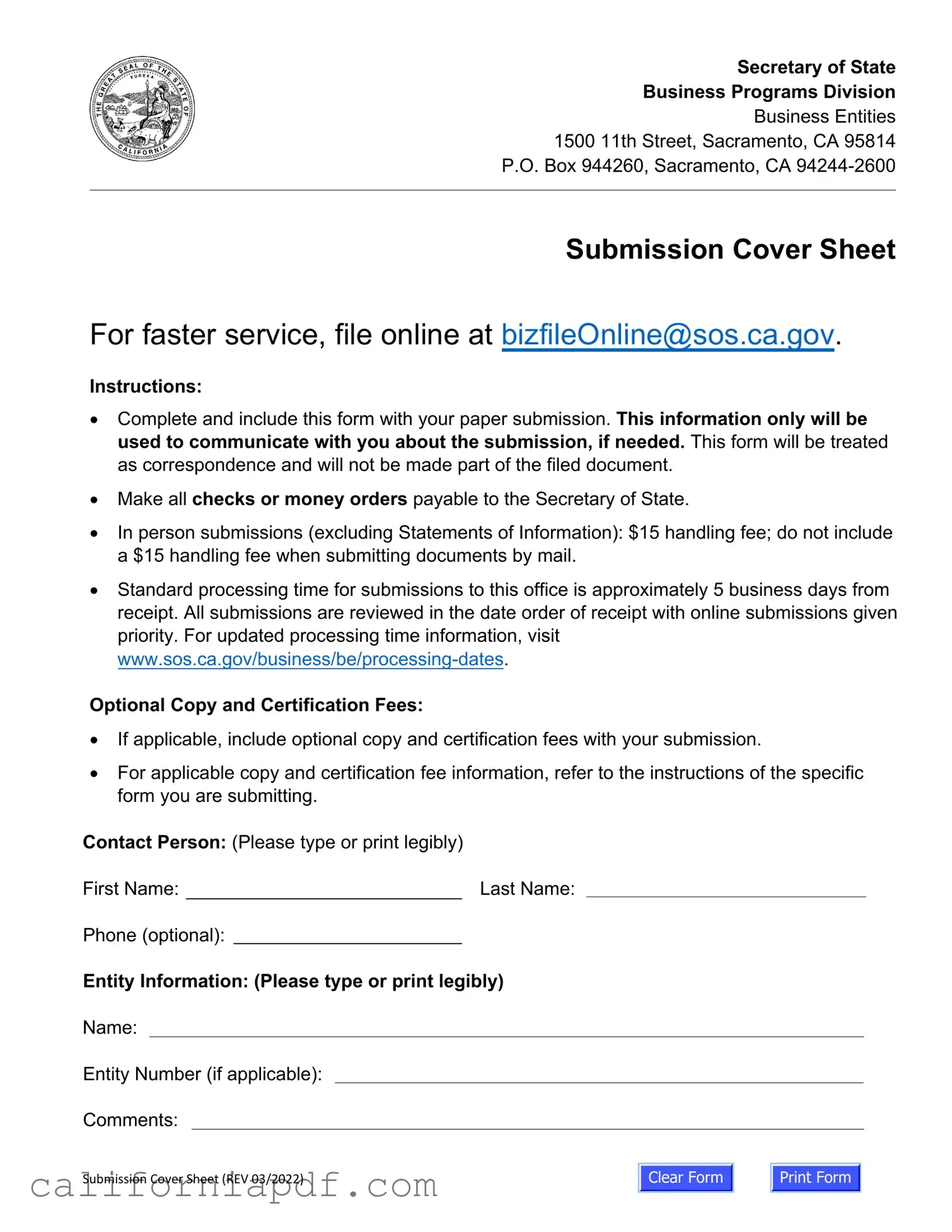The Articles of Incorporation for a Corporation serve a similar purpose to the California LLC-1 form, as they are both initial filing documents required by the Secretary of State to legally form a business entity within the state. Both documents require basic information about the business, including the business name, address, and the name and address of the agent for service of process. However, the Articles of Incorporation are specific to corporations, detailing the number of shares the corporation is authorized to issue, while the LLC-1 form is specific to limited liability companies, detailing the management structure of the LLC.
The Statement of Information, filed after the initial registration documents like the LLC-1, provides the state with updated information on the business's management, address, and agent for service of process. While the LLC-1 form is necessary for the initial setup of an LLC, the Statement of Information must be filed periodically, typically annually or biennially depending on the state, to keep the business in compliance with state regulations. Both documents are crucial for maintaining the legal standing and operational compliance of the entity within the state.
The DBA (Doing Business As) Filing, or fictitious business name statement, is similar to the LLC-1 form in that it is a document filed with state or local government agencies. While the LLC-1 establishes the legal entity of the LLC, a DBA filing allows the business to operate under a name different from its legally registered name. Both filings contribute to the legal formation and public identification of the business but serve different purposes in the business's operation and branding.
The Employer Identification Number (EIN) Application (Form SS-4 with the IRS) shares a preparatory step with the LLC-1 form in the process of forming a business. After an LLC is formed with the state (via the LLC-1 form), it often needs to obtain an EIN for tax purposes, banking, and hiring employees. Although the EIN application is a federal requirement and the LLC-1 is state-specific, both are foundational steps in setting up a business's legal and financial structure.
The Operating Agreement for an LLC, while not filed with the state like the LLC-1, is an internal document that outlines the governance structure, financial arrangements, and operational procedures of the LLC. The LLC-1 form hints at the management structure of the company by indicating whether it will be managed by one manager, multiple managers, or all members, but the operating agreement provides detailed governance policies and member roles, rights, and responsibilities.
The Seller's Permit Application with the state's revenue department shares similarities with the LLC-1 form in that both are initial steps required for operating a legally compliant business. The LLC-1 registers the business as a legal entity, while the Seller’s Permit allows the business to sell goods and services within the state and collect sales tax. Both documents are essential for the foundation of a business's operations within state laws and regulations.
The Business License Application, required by many local governments for businesses to legally operate within their jurisdiction, is another foundational step akin to filing the LLC-1 form. The LLC-1 form establishes the legal entity on a state level, while the business license gives the LLC permission to conduct business within a specific locality. Both are necessary for legal compliance, albeit on different governmental levels.
The Biennial Report, or periodic report, required by some states, serves a similar ongoing compliance role as the Statement of Information but differs from the one-time filing of the LLC-1 form. This report keeps the state updated on critical information similar to what's included in the LLC-1, such as business address and agent for service of process. The key difference is in the timing; the LLC-1 is a formation document, while the Biennial Report is part of continuous compliance.
The Limited Partnership (LP) Registration form, like the LLC-1, is used to establish a specific type of business entity with the state. Both documents detail the structure and operating addresses of the entity, and designate an agent for service of process. However, the LP form is specific to the formation of a limited partnership, which has different management and liability structures compared to the LLC formed with the LLC-1 form.
The Nonprofit Corporation Articles of Incorporation share a foundational purpose with the LLC-1 form in the realm of entity creation but for different entity types. Both documents are used to legally form and register the entity with the state, including naming an agent for service of process. The Nonprofit Articles focus on details relevant to nonprofit status, such as the organization's charitable purpose, while the LLC-1 is tailored to for-profit limited liability companies.


